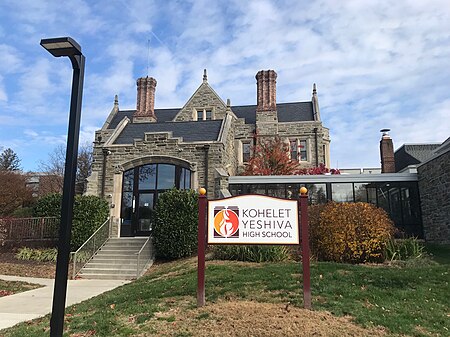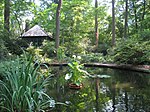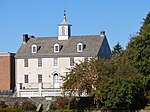Kohelet Yeshiva High School
2000 establishments in PennsylvaniaAC with 0 elementsEducational institutions established in 2000Jews and Judaism in PennsylvaniaLower Merion Township, Pennsylvania ... and 3 more
Modern Orthodox Jewish day schools in the United StatesPrivate high schools in PennsylvaniaSchools in Montgomery County, Pennsylvania

Kohelet Yeshiva High School (Hebrew: ישיבת קהלת) is a Modern Orthodox college preparatory Jewish high school that offers a dual curriculum program of Judaic and General Studies for both boys and girls in Merion, Pennsylvania in the Philadelphia suburbs.
Excerpt from the Wikipedia article Kohelet Yeshiva High School (License: CC BY-SA 3.0, Authors, Images).Kohelet Yeshiva High School
Old Lancaster Road, Lower Merion Township
Geographical coordinates (GPS) Address Nearby Places Show on map
Geographical coordinates (GPS)
| Latitude | Longitude |
|---|---|
| N 40.0021 ° | E -75.2411 ° |
Address
Kohelet Yeshiva High School
Old Lancaster Road
19066 Lower Merion Township
Pennsylvania, United States
Open on Google Maps








